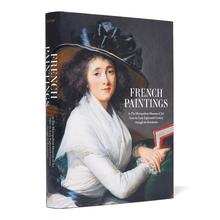More about Madame Bergeret de Frouville as Diana
- All
- Info
- Shop

Contributor
For the last 117 years, cozy in the halls of the Met Museum in New York, Nattier's Madame Bergeret de Frouville as Diana, formerly known as Madame de Maison-Rouge as Diana, changed her name, and her identity, a couple of times, raising the possibility that she just needed a fresh start.
Her outfit appears to be a casual version of something Björk would wear to the grocery store. When the Met copped this joint, probably way before your parents were born, they called it Princess de Condé as Diana, based on an old label that was on the frame. As the story goes, this work once hung in the Mondésir family château near Cherbourg, France, and it was a gift to the lady of the house from Marie Antoinette. It sure is a sexy story, but it seems not to be B.S.-free, and we haven't given it much weight ever since Pierre de Nolhac first published this portrait, a few years after it found a home at the Met, and about 149 years after Nattier finished it. De Nolhac rejected the idea that it was a portrayal of the Princess de Condé owned by Marie Antoinette. For about a century, nobody had any idea who this beautiful woman was, until Xavier Salmon suggested the Madame de Maison-Rouge, which convinced us for twenty years. Then, Katharine Baetjer notes, based on the sale of a copy of this painting, Ólafur Þorvaldsson, who tips off museums about their artworks, identified the sitter as Elisabeth Marguerite Thérèse de la Haye des Fossés, the wife of fermier général de Frouville, a tax collector for the French monarchy.
Her name changes to accomodate our evolving theories as to her identity, which has been challenging to discern accurately, partly because the publishing standard of the time was to refer to married women without any reference to the woman's own name, i. e. "Madame de Husband's Name," as if she never existed before she got hitched. Many people saw this custom as a means to prevent women from acting without their husband's permission, which, they feared, would lead to adultery, and so on. It was also a sign of writerly modesty and social distancing, as it were, not to talk about someone's wife, even by mentioning her name. It also denotes the man becoming the possessor of the woman's entire identity, because naming is essential to control, and the woman's value was, and, to some people, still is, identical with her virginity at marriage, itself supposedly indicative of her moral purity. Baetjer suggests that Nattier, a master of allegorical portraiture, was engaging in a convention of portraying brides as Diana, the Roman deity of the hunt, because Diana was a virgin, and nobody had ever heard of "art for art's sake" yet, so they knew that these works were coded statements about the virginity of the sitter.
Sources
- American Art Directory, Volume 5. New York: American Art Annual, 1905.
- Baetjer, Katharine. French Paintings in The Metropolitan Museum of Art from the Early Eighteenth Century through the Revolution. New York: Metropolitan Museum of Art, 2019.
- "Portrait of a Woman in a Rose-Colored Gown." Museum of Fine Arts Boston, https://collections.mfa.org/objects/33950?image=.
- Thomsen, Natasha. Women's Rights. New York: InfoBase, 2007.












